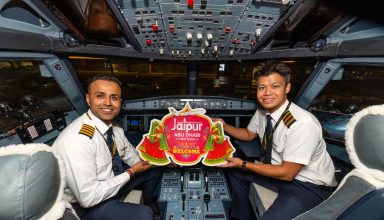From Boys Over Flowers to Squid Game, a peek into the K-dramas' hotspot

From Boys Over Flowers to Squid Game, a peek into the K-dramas’ hotspot

With tropical temperatures and picturesque beaches, South Korea’s Jeju island has long been a holiday spot. However, it was the exploding popularity of Korean drama that really cemented Jeju’s reputation as a dream destination.
From Boys Over Flowers to Squid Game, there are several K-dramas that were either shot in Jeju Island or describe the beauty of the island. But did you know that in the olden days, Jeju was used to exile convicts and prisoners?
It was the hard work and sweat and blood of hundreds of Koreans that turned Jeju into the paradise that it has become with some breathtaking attractions.
One such tourist spot was the Spirited Garden. In 1970, a Jeju man dreamt of building a beautiful Japanese-style bonsai garden in his hometown. Song Bong-gyu, a high school teacher and later an assemblyman, began working on his dream in 1971 by pouring all his savings into purchasing over 29 hectares of wasteland on the island.
Over the next few decades, he painstakingly designed and carved every single plant and rock in the park. As we walked through the meandering paths inside the park, the love and effort that was poured into this endeavour was on display. There were little water pools with schools of Koi fish dotting the park at various spots. Many of the Bonsai trees had been there for over five decades.
The icing on the cake was being able to meet the mastermind at the end of our tour. Speaking to me through a translator, Song Bong-gyu thanked me for visiting the park and asked me to leave a review. According to his team, despite his age, he regularly visits the park and interacts with guests.
The dragon caves
Another unmissable spot in Jeju is the Hallim Park. One of the most popular tourist spots on the island, the botanical garden is divided into nine parts, including a Palm Tree Road, Water Garden and Subtropical Botanic Garden. However, the highlights of the park were the Hyeopjae and Ssangyong Caves, known to be the only two-dimensional caves in the world. Both the caves were formed by the volcanic eruption of Mount Halla and the subsequent flow of lava. The original colour of the Hyeopjae Cave was black. However, the cave’s surface is piled up with blown sand of shell powder from the beach. The lime of these shell powder has dissolved in the rain and entered into the cave, causing the originally dark lava cave to change into a golden lime one. If you look carefully, the lava shelves show the path of the flow when the mountain erupted.
Ssangyong means two dragons. This cave is called so because on the ceiling, there is a clear shape of two dragons as if they lived here. This is a unique place in the world where a lava cave and a limestone cave are joined together. You can find stalagmites and stalactites in the cave, which can’t grow in a lava cave. Fossilised seashells, including abalone, were found in the cave, leading many to believe it was under the sea when it was formed long ago.
It was a great experience to be able to walk through the caves and observe the various ridges and stones, each of which seemed to tell the stories of a colourful past that had seen various elements of nature.
Of Waterfalls and Seas
Apart from parks, there is plenty to explore on the island ranging from natural waterfalls to mountain peaks.

One of our first stops was at the beautiful Jeongbang Waterfall. Climbing down over 130 steps, we reached a lush green landing that led us to the waterfall. It is the only one in Korea that falls directly into the ocean. A winding paved stone path led us to the rocky area in front of the waterfall. People must climb over the rocks to get to a vantage point that gives the best photos for the ‘gram. The rocks are wet and slippery, and I watched several people fall on them.
However, the spot was worth the pain taken to get to it. The water forms a rainbow as it falls into the ocean. Feeling the mist of the waterfall being sprayed on your face while seeing a beautiful rainbow being formed on the water is a beautiful feeling.
Our next stop was the Jusangjeolli Cliff located on the south coast of Jeju island. The cliff is a stone pillar formed by lava that flowed out of a crater and contracted as it cooled rapidly when it met the sea. It is shaped into a beautiful polygonal staircase-like form. When you see the formation for the first time, it is hard to imagine that the neatly stacked structure has been formed completely by the sea. The stones are 30 to 40 meters high, hexagonal in shape, and line the coast for about one kilometer.
It is believed that Jeju Island was formed through volcanic activity that started more than a million years ago and lasted until 1,000 years ago. The soil of the island is made of lava rocks and ash, due to which its vegetation is markedly different from mainland Korea. It is impossible to grow rice — an integral part of Korean cuisine — on Jeju and the rice consumed there is imported.
The history and legacy of Jeju
According to the locals, Jeju has an abundance of three things — stones, wind, and women. Stones are so abundantly found on the island that the locals carve them into people-like shapes and have an entire legend about them. Once, there lived a seolmundae (grandmother in Korean) who created Jeju island. She had 500 sons who were generals that guarded the island.
She was so tall that when she lay down with her head against Mt. Halla, her two legs stretched to islets off the coast of Jeju City. Once when her sons were out hunting, she made a huge pot of soup but accidentally fell into the pot. The sons returned home and ate the soup, with each son scooping enough into their bowls depending on their age. It was only when the youngest son got to the bottom of the pot and saw her bones that they realised had eaten their own mother.
The sons wept bitterly, and each turned into stone. The Jeju Stone Park pays tribute to this legend.
No account of Jeju will be complete without mentioning the women of the island. They are often described as “superwomen”. While Korea, like much of Asia, has a patriarchal society, Jeju has had a history of women being the main breadwinners. Not only do they earn and feed the family, but they also do housework and manage everything about the household. “The men of Jeju just have to eat and while away time,” joked my tour guide Alice. “The rest of Korea sometimes wishes that their women were like Jeju women.”
The locals claim that this tendency of Jeju women doing ‘everything’ stems from the history of many men dying at sea. In fact, they have even devised their own unique way of fishing.
The Jeju haenyeo (women divers) are included in the Intangible Cultural Heritage of Humanity list by Unesco. They are a community of women, some in their 80s, who dive up to 10m under the sea to gather shellfish, such as abalone or sea urchins without the help of oxygen masks. However, the diving puts such tremendous pressure on their bodies that they end up developing health problems. This has caused it to be a dying art.
Over two days I was able to experience a little bit of Jeju. The one thing I learnt from the island was that the people’s resilience and resolve was second to none.
wknd@khaleejtimes.com
ALSO READ:
source: khaleejtimes


